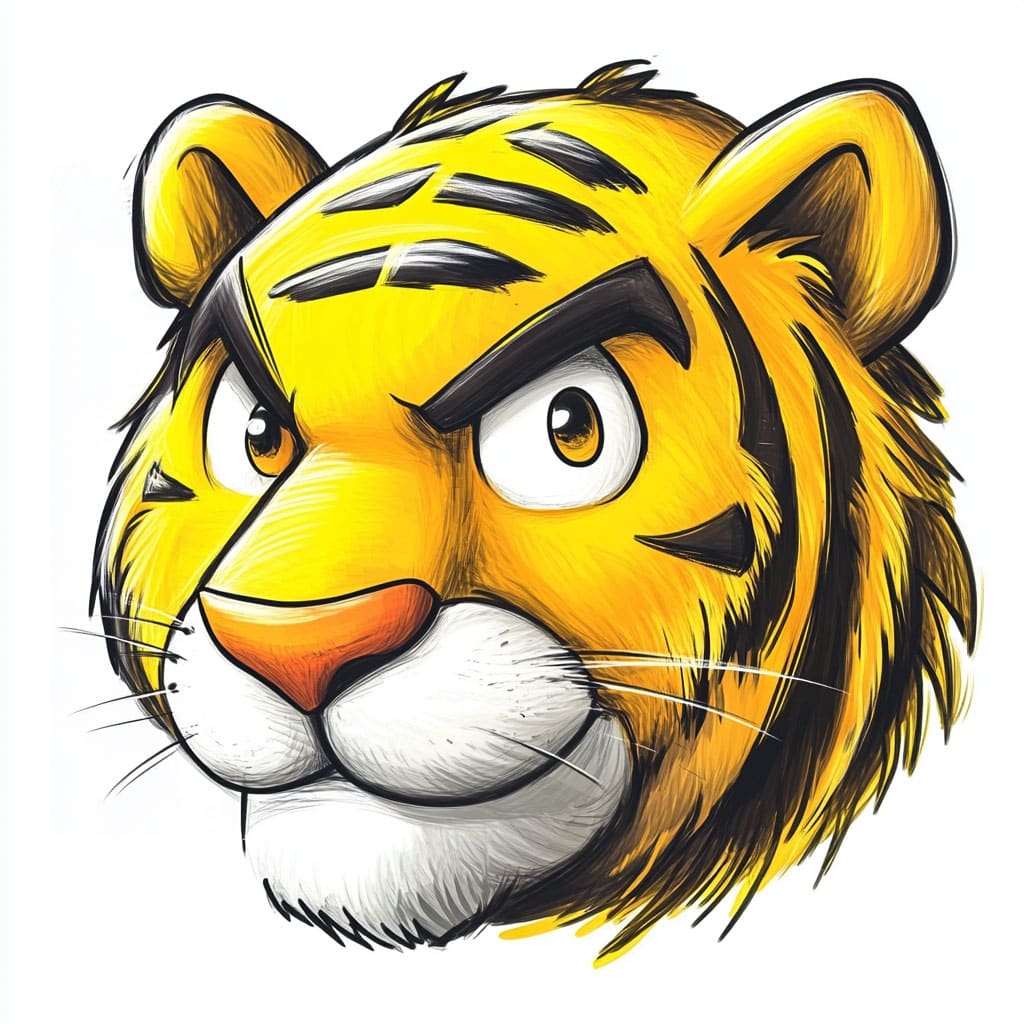
Learning how to draw a tiger can be both thrilling and challenging, as these majestic creatures possess a unique blend of power, grace, and beauty. With their striking stripes and piercing eyes, tigers have long captivated artists and art enthusiasts alike. In this guide, we will explore the art of drawing a tiger, from capturing their distinctive features to conveying their fierce yet elegant presence on paper.
Whether you are a beginner looking to hone your drawing skills or an experienced artist seeking a new creative challenge, mastering the art of drawing a tiger is sure to ignite your imagination and push your artistic boundaries. So grab your pencils, sharpen your focus, and prepare to embark on a wild and rewarding artistic journey into the world of tiger drawing.



Materials Required
To draw a Tiger, you will need the following materials:
- Drawing paper or sketchbook
- Pencils (preferably a range of hardness from 2H to 6B)
- Eraser (kneaded eraser is recommended for more precise erasing)
- Pencil sharpener
- Blending stumps or tortillons for shading
- Reference photos of Tigers for accuracy and inspiration
Optional materials:
- Colored pencils or markers for adding color to your drawing
- Fixative spray to protect your finished drawing
Make sure to set up a comfortable workspace with good lighting to work on your drawing. Have fun and enjoy the process of creating as you learn how to draw a tiger!
How to Draw a Tiger: a Step-by-step Guide
Step 1: Gather Your Materials
- Gather all necessary materials such as paper, pencils (preferably 2B or softer), eraser, and reference images of a tiger for guidance.
Step 2: Start with Basic Shapes
- Begin by lightly sketching basic shapes to outline the body of the tiger. Start with an oval for the head and a larger oval for the body.
Step 3: Add Details to the Head
- Sketch the placement of the eyes, nose, and mouth within the oval shape of the head. Pay attention to the proportions and placement of these features.
Step 4: Outline the Body and Limbs
- Use the larger oval shape as a guide to outline the body of the tiger. Add the limbs, ensuring they are proportionate to the body.
Step 5: Define the Features
- Start adding details to the face such as the eyes, ears, and stripes. Tigers have distinct patterns, so pay attention to the reference image for guidance.
Step 6: Refine the Details
- Add more details to the body by sketching the stripes and fur texture. Use light, short strokes to create a sense of fur texture.
Step 7: Erase Guidelines
- Carefully erase any initial guidelines and shapes that are no longer needed, ensuring that only the final lines and details remain.
Step 8: Add Shadows and Shading
- Create depth and dimension by adding shadows and shading to your tiger drawing. Use a blending tool or your pencil to create smooth transitions between light and dark areas.
Step 9: Final Touches
- Take a step back and assess your drawing. Make any necessary adjustments to ensure accuracy and realism. Add any final details or highlights to enhance the drawing further.
Step 10: Sign and Date
- Lastly, sign and date your artwork to mark its completion. Congratulations on successfully drawing a tiger!
Conclusion
Congratulations on completing your tiger drawing! Your attention to detail and use of shading has really brought the tiger to life on the page. Remember, art is a journey and each piece you create helps you grow as an artist. Keep practicing, exploring new techniques, and most importantly, stay true to your unique artistic vision. Your dedication and passion for art will continue to shine through in your work as you continue to practice how to draw a tiger.
Reference Photos of Tigers



Fun Facts About Tigers
- Tigers are the largest cat species in the world, with some males growing up to 11 feet in length and weighing up to 660 pounds.
- Tigers have striped fur patterns that are unique to each individual, similar to human fingerprints.
- Tigers are excellent swimmers and are known to be able to swim up to 4 miles in one stretch.
- Tigers are solitary animals and are primarily nocturnal, which means they are most active during the night.
- Tigers have powerful jaws and sharp teeth, allowing them to take down prey much larger than themselves.
- Tigers have a special adaptation in their whiskers called “vibrissae” that help them navigate and detect movement in the dark.
- Tigers have a keen sense of hearing and can hear frequencies as low as 0.2 kHz (kilohertz), which is lower than what humans and most other animals can hear.
- Tigers are territorial animals and will mark their territory with urine and scratch marks on trees.
- Tigers have excellent camouflage abilities, which help them blend into their surroundings and ambush their prey.
- Tigers have a unique vocalization called a “chuff,” which is a friendly greeting sound used between tigers and other animals.
Suggestions for Scenes and Settings for Tiger Drawings
- Tiger in a lush jungle setting, surrounded by vibrant bamboo and exotic flowers.
- Tiger lounging on a large rock overlooking a serene waterfall in a tropical rainforest.
- Tiger stalking through tall grass in the savannah, with the golden hues of the setting sun in the background.
- Tiger swimming gracefully in a crystal-clear jungle river, with dappled sunlight filtering through the trees above.
- Tiger resting in the shade of an ancient temple ruins, with moss-covered stones and intricate carvings in the background.
- Tiger climbing a rugged mountain peak, with snow-capped peaks in the distance and a dramatic sky overhead.
- Tiger prowling through a misty forest at dawn, with shafts of soft light filtering through the fog.
- Tiger basking in the warm sunlight on a rocky outcrop overlooking a vast desert landscape.
- Tiger playfully interacting with its cubs in a lush meadow filled with wildflowers and butterflies.
- Tiger in a surreal dream-like setting, with swirling colors and fantastical elements to spark imagination and creativity.









